1 of 31
Downloaded 10 times
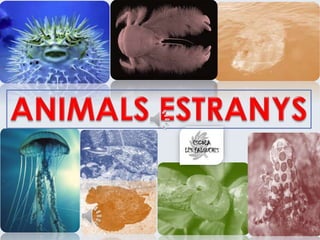
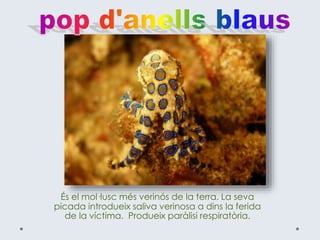
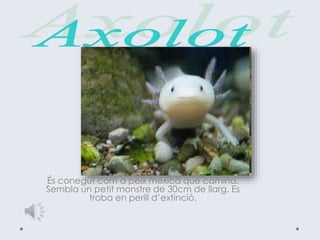
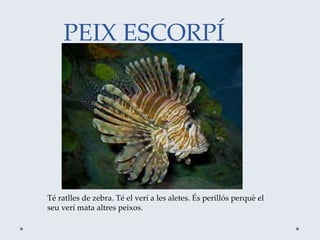
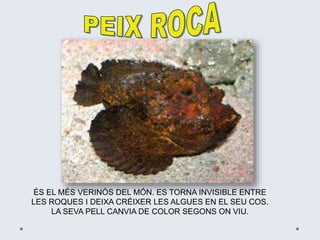
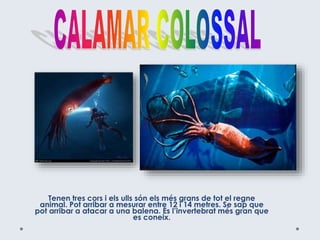

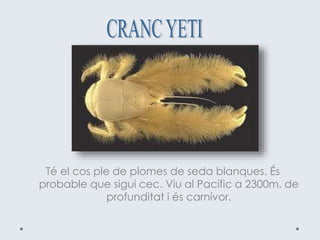
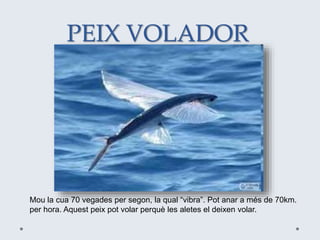
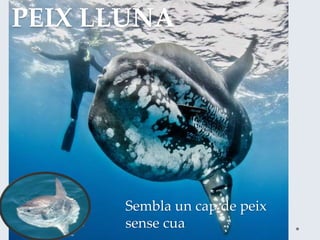
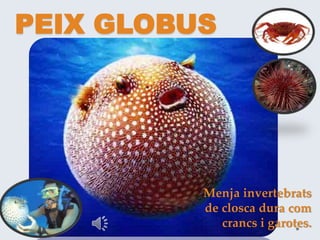

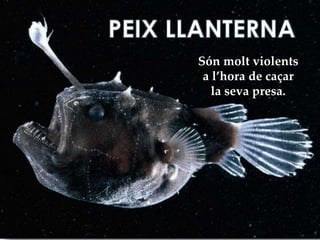
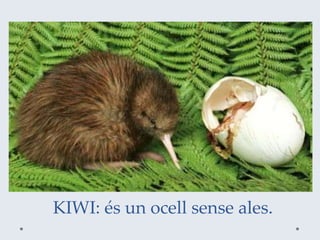
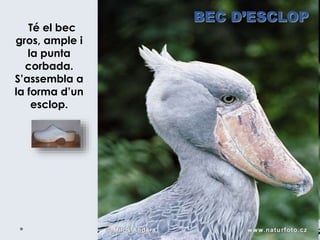

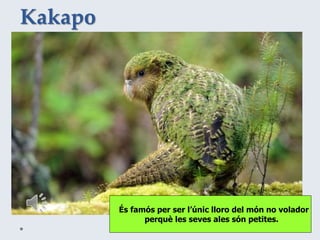
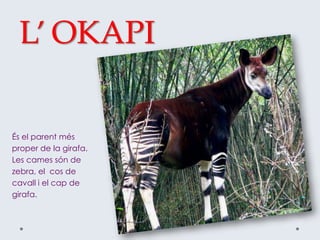

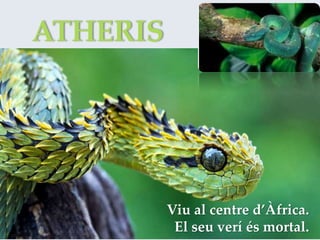
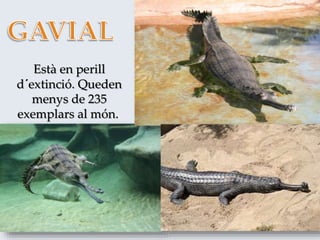

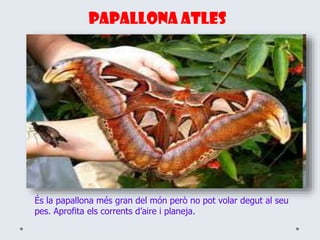



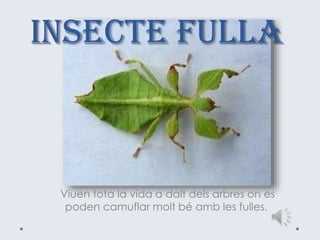
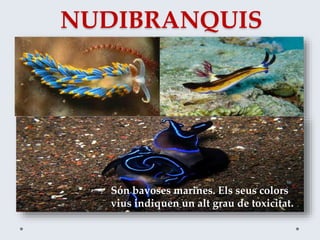

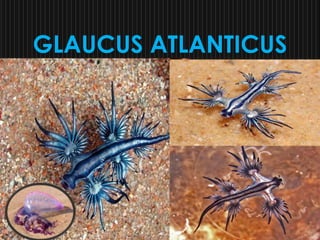
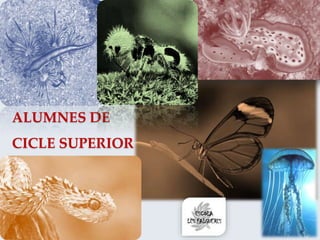
Ad
Recommended
Annelids
AnnelidsCHIREC
╠²
Annelids, also known as segmented worms, are a phylum of over 17,000 species found in a variety of environments. They are bilaterally symmetrical with multiple body segments containing the same organs. Many can reproduce asexually, but sexual reproduction involving external fertilization or internal cocoons is more common. Annelids play important ecological roles in soil enrichment and as prey, and some species are used as food or bait by humans.Openbite
OpenbiteXnb Haji
╠²
This document discusses open bite, including its definition, classification, causes, and management. Open bite is classified as anterior, posterior, dental/simple, or skeletal/complex. Causes include hereditary factors, environmental factors like mouth breathing, thumb sucking, and trauma. Management depends on the patient's age and involves things like habit control, growth modulation, functional appliances with bite blocks, and sometimes orthognathic surgery. High pull headgear is discussed as a way to control vertical growth.King cobras
King cobrasSilvia Oliva
╠²
The king cobra is the largest venomous snake in the world, able to grow up to 18 feet long. It has a large hood and spreads it when threatened, along with raising up to 6 feet of its body off the ground. The king cobra's venom is powerful enough to kill elephants or 20 people. It preys on other snakes and lizards, hunting with its keen eyesight and sense of smell. Though facing threats from habitat loss and killing, the king cobra remains not yet endangered.Orcas
Orcaspriomhoide
╠²
The killer whale, or orca, is the largest member of the dolphin family. They have distinctive black and white coloring and large fins and tails. Males can reach over 20 feet long and weigh up to 12,000 pounds, while females are typically smaller. Killer whales hunt in packs and pass behaviors and accents down to their offspring. They have rarely attacked humans in the wild, with most incidents occurring among captive whales, such as the male orca Tilikum who has fathered 21 calves but also been involved in three human deaths.Animal intelligence
Animal intelligencemariaho21
╠²
Dolphins are marine mammals closely related to whales that vary in size but generally weigh around 40 kg. They have streamlined bodies and are carnivorous, mostly eating fish and squid. Dolphins have acute eyesight, can hear much higher frequencies than humans, use their teeth like antennae, and have a well-developed sense of touch. They communicate through whistle-like sounds, occasionally leap out of the water, and can sleep with half of their brain at a time.Malocclusion-Cross bite
Malocclusion-Cross biteChinthamani Laser
╠²
The document discusses crossbite, a dental condition where teeth are misaligned either buccally or lingually, affecting occlusion. It describes different types of crossbites, their causesŌĆödental, skeletal, and functionalŌĆöand emphasizes the importance of early treatment. Treatment options include various dental appliances and therapies to correct the misalignment.Lion
Lionsdrashahzadi
╠²
This document provides information about lions. It discusses lions in Islamic scripture and mentions Prophet Muhammad's uncle Hazrat Hamza's title of "Lion of Allah". It provides facts about lions such as their physical appearance, characteristics, habitat in Africa and Asia, hunting and feeding behaviors, social structure living in prides, and reproduction details. The document also compares male and female lions and discusses lion behavior, breeding information, and lifespan.102 orthodontics diagnosis-mohamad aboualnaser-awatef shaar-oussama sandid-or...
102 orthodontics diagnosis-mohamad aboualnaser-awatef shaar-oussama sandid-or...Dr Mohamad ABOUALNASER -Orthodontist
╠²
This document outlines the process of orthodontic diagnosis and treatment planning. It discusses topics such as clinical examination, radiography, dental casts, photography, temporomandibular joint examination, facial typology, malocclusion classification, occlusion, orofacial myofunctional disorders, and their effects on facial growth and dental development. The document is authored by three orthodontists and provides resources for orthodontic diagnosis and treatment planning through clinical guidelines and photographic examples.The Eating Habits Of Animals Ppt Project
The Eating Habits Of Animals Ppt ProjectStacia Herson
╠²
The document discusses the feeding habits of different types of animals - herbivores, carnivores, and omnivores. It explains that herbivores only eat plants, carnivores only eat meat, and omnivores eat both plants and meat. It describes the physical characteristics, such as teeth, of each type that help determine their diets. The document also provides examples of common herbivores, carnivores, and omnivores.Antarctica- Icy wilderness of extremes and wonder
Antarctica- Icy wilderness of extremes and wondertahreemzahra82
╠²
Antarctica is the southernmost, uninhabited continent, known for its extreme climate and unique geography, including the world's highest average elevation and some of the coldest temperatures. It hosts diverse wildlife, primarily marine species and birds like penguins, and has several claims from various nations, with Australia's claim being the largest. Notable features include the Blood Falls and the existence of several endangered species due to historical whaling and habitat loss.Primates
PrimatesSakina Rubab
╠²
The document provides an overview of primates, detailing their classifications into strepsirrhines and haplorhines, characteristics such as physical description, social behavior, and dietary habits. It also highlights their geographical distribution and reproductive traits. Additionally, it touches on their legal status and cultural significance in various societies.Australia slide
Australia slideUFSC
╠²
Australia is the smallest continent but sixth largest country. It has a population of around 20 million concentrated along the east and south east coast. The capital is Canberra. Australia was first inhabited over 50,000 years ago and was colonized by Britain in the late 18th century as a penal colony, with Sydney established in 1788. Australia has a mostly hot and dry continental climate, with much of the interior being desert. Famous places include the Great Barrier Reef, Sydney Harbour Bridge, Tasmania, the Kimberley in Western Australia, Snowy Mountains, Melbourne, Whitsunday Islands, and Uluru.Obelia
ObeliaMitrajit Deb, Ph.D
╠²
Obelia is a genus in the class Hydrozoa, primarily consisting of marine and some freshwater species, exhibiting a life cycle with both polyp and medusa stages. It belongs to the phylum Cnidaria and is categorized in the family Campanulariidae, with notable species including Obelia dichotoma and Obelia longissima. The document provides a scientific classification of Obelia along with a disclaimer regarding image use for educational purposes.TEETH... tell all. (teach)
TEETH... tell all. (teach)Moira Whitehouse
╠²
This document discusses different animal skulls and identifies each animal as an herbivore, carnivore, or omnivore based on dental features. Key identifying characteristics included flat molars for grinding plants in herbivores, sharp pointed teeth for seizing prey in carnivores, and a mix of sharp and flat teeth in omnivores. Several species discussed as examples are the barracuda and gila monster as carnivores, llama and deer as herbivores, and black bear and raccoon as omnivores.Crocodiles
CrocodilesSwayam Prakash Nayak
╠²
The document provides a comprehensive overview of crocodilians, including their taxonomic classification, physiological characteristics, reproduction, behavior, and various species like alligators, caimans, gharials, and crocs. It highlights their habitats, feeding behaviors, social structures, vocalizations, and health concerns, as well as their importance in ecosystems. Moreover, the document discusses crocodile attacks on humans, particularly in India, emphasizing their aggressive nature.Animales marinosdavidgironceballos
╠²
El documento describe brevemente las caracter├Łsticas y comportamientos de varias criaturas marinas, incluyendo ballenas, delfines, tiburones, mantas raya, krill, orcas, medusas gigantes, almejas gigantes, cangrejos, leones marinos, ping├╝inos, pulpos, an├®monas, mejillones, esponjas marinas, calamares y peces espada.Clases de MariposasDiana Larrahondo Pineda
╠²
El documento describe las caracter├Łsticas de varias especies de mariposas, incluyendo su nombre cient├Łfico, h├Ībitat, comportamiento y adaptaciones notables. Se mencionan mariposas que migran largas distancias, tienen colores llamativos, son longevas, habitan en alturas extremas, emiten sonidos para espantar depredadores, y tienen alas transparentes o que se camuflan como hojas secas.More Related Content
What's hot (9)
102 orthodontics diagnosis-mohamad aboualnaser-awatef shaar-oussama sandid-or...
102 orthodontics diagnosis-mohamad aboualnaser-awatef shaar-oussama sandid-or...Dr Mohamad ABOUALNASER -Orthodontist
╠²
This document outlines the process of orthodontic diagnosis and treatment planning. It discusses topics such as clinical examination, radiography, dental casts, photography, temporomandibular joint examination, facial typology, malocclusion classification, occlusion, orofacial myofunctional disorders, and their effects on facial growth and dental development. The document is authored by three orthodontists and provides resources for orthodontic diagnosis and treatment planning through clinical guidelines and photographic examples.The Eating Habits Of Animals Ppt Project
The Eating Habits Of Animals Ppt ProjectStacia Herson
╠²
The document discusses the feeding habits of different types of animals - herbivores, carnivores, and omnivores. It explains that herbivores only eat plants, carnivores only eat meat, and omnivores eat both plants and meat. It describes the physical characteristics, such as teeth, of each type that help determine their diets. The document also provides examples of common herbivores, carnivores, and omnivores.Antarctica- Icy wilderness of extremes and wonder
Antarctica- Icy wilderness of extremes and wondertahreemzahra82
╠²
Antarctica is the southernmost, uninhabited continent, known for its extreme climate and unique geography, including the world's highest average elevation and some of the coldest temperatures. It hosts diverse wildlife, primarily marine species and birds like penguins, and has several claims from various nations, with Australia's claim being the largest. Notable features include the Blood Falls and the existence of several endangered species due to historical whaling and habitat loss.Primates
PrimatesSakina Rubab
╠²
The document provides an overview of primates, detailing their classifications into strepsirrhines and haplorhines, characteristics such as physical description, social behavior, and dietary habits. It also highlights their geographical distribution and reproductive traits. Additionally, it touches on their legal status and cultural significance in various societies.Australia slide
Australia slideUFSC
╠²
Australia is the smallest continent but sixth largest country. It has a population of around 20 million concentrated along the east and south east coast. The capital is Canberra. Australia was first inhabited over 50,000 years ago and was colonized by Britain in the late 18th century as a penal colony, with Sydney established in 1788. Australia has a mostly hot and dry continental climate, with much of the interior being desert. Famous places include the Great Barrier Reef, Sydney Harbour Bridge, Tasmania, the Kimberley in Western Australia, Snowy Mountains, Melbourne, Whitsunday Islands, and Uluru.Obelia
ObeliaMitrajit Deb, Ph.D
╠²
Obelia is a genus in the class Hydrozoa, primarily consisting of marine and some freshwater species, exhibiting a life cycle with both polyp and medusa stages. It belongs to the phylum Cnidaria and is categorized in the family Campanulariidae, with notable species including Obelia dichotoma and Obelia longissima. The document provides a scientific classification of Obelia along with a disclaimer regarding image use for educational purposes.TEETH... tell all. (teach)
TEETH... tell all. (teach)Moira Whitehouse
╠²
This document discusses different animal skulls and identifies each animal as an herbivore, carnivore, or omnivore based on dental features. Key identifying characteristics included flat molars for grinding plants in herbivores, sharp pointed teeth for seizing prey in carnivores, and a mix of sharp and flat teeth in omnivores. Several species discussed as examples are the barracuda and gila monster as carnivores, llama and deer as herbivores, and black bear and raccoon as omnivores.Crocodiles
CrocodilesSwayam Prakash Nayak
╠²
The document provides a comprehensive overview of crocodilians, including their taxonomic classification, physiological characteristics, reproduction, behavior, and various species like alligators, caimans, gharials, and crocs. It highlights their habitats, feeding behaviors, social structures, vocalizations, and health concerns, as well as their importance in ecosystems. Moreover, the document discusses crocodile attacks on humans, particularly in India, emphasizing their aggressive nature.102 orthodontics diagnosis-mohamad aboualnaser-awatef shaar-oussama sandid-or...
102 orthodontics diagnosis-mohamad aboualnaser-awatef shaar-oussama sandid-or...Dr Mohamad ABOUALNASER -Orthodontist
╠²
Viewers also liked (16)
Animales marinosdavidgironceballos
╠²
El documento describe brevemente las caracter├Łsticas y comportamientos de varias criaturas marinas, incluyendo ballenas, delfines, tiburones, mantas raya, krill, orcas, medusas gigantes, almejas gigantes, cangrejos, leones marinos, ping├╝inos, pulpos, an├®monas, mejillones, esponjas marinas, calamares y peces espada.Clases de MariposasDiana Larrahondo Pineda
╠²
El documento describe las caracter├Łsticas de varias especies de mariposas, incluyendo su nombre cient├Łfico, h├Ībitat, comportamiento y adaptaciones notables. Se mencionan mariposas que migran largas distancias, tienen colores llamativos, son longevas, habitan en alturas extremas, emiten sonidos para espantar depredadores, y tienen alas transparentes o que se camuflan como hojas secas.Ad
Similar to Animals estranys (20)
Ad
Recently uploaded (9)
DOSSIER ESTIU A1INICIAL! Us presento un dossier que haur├Ās de completar dura...
DOSSIER ESTIU A1INICIAL! Us presento un dossier que haur├Ās de completar dura...JosepRamonGregoriMuo
╠²
Benvolguts alumnes,
Us presento un dossier que haur├Ās de completar durant les vostres vacances dŌĆÖestiu i entregar-lo, ben fet i ben presentat, al setembre. La idea ├®s que practiqueu i no oblideu vocabulari que hem treballat durant el curs.
Us desitjo que passeu i gaudiu dŌĆÖunes bones vacances dŌĆÖestiu.
Ens tornarem a veure al 8 de setembre quan comencen les classes de nou!
Informe Llista d'espera Escola Roser Capdevila
Informe Llista d'espera Escola Roser CapdevilaEscolaRoserCapdevila18
╠²
Publicaci├│ de la llista d'espera per la matr├Łcula del curs 25-26 de l'escola Roser Capdevila de Sant Joan Desp├Ł.20250616+Ėķ▒▒╣Š▒▓§│┘▓╣+│ó▓╣+│šŠ▒▓į▓Ō┤Ū│┘▓╣+-+ĘĪ▓§│”┤Ū▒¶▓╣+│¦▓╣▓į│┘+│šŠ▒│”▒▓į├¦+╗Õ▒+▓č┤Ū▒¶▒¶▒│┘+╗Õ▒▒¶+│š▓╣▒¶▒¶├©▓§+-+▒╗ÕŠ▒│”Š▒...
20250616+Ėķ▒▒╣Š▒▓§│┘▓╣+│ó▓╣+│šŠ▒▓į▓Ō┤Ū│┘▓╣+-+ĘĪ▓§│”┤Ū▒¶▓╣+│¦▓╣▓į│┘+│šŠ▒│”▒▓į├¦+╗Õ▒+▓č┤Ū▒¶▒¶▒│┘+╗Õ▒▒¶+│š▓╣▒¶▒¶├©▓§+-+▒╗ÕŠ▒│”Š▒...montsefarell1
╠²
Escola Sant Vicen├¦ de Mollet del Vall├©sINFORME_ASSIGNADES_INFORME_ASSIGNADESescolaernestlluch.pdf
INFORME_ASSIGNADES_INFORME_ASSIGNADESescolaernestlluch.pdfErnest Lluch
╠²
ALUMNES ASSIGNATS
PREINSCRIPCI├ō 25/26Places assigandes curs 25-26 escola Roser Capdevila
Places assigandes curs 25-26 escola Roser CapdevilaEscolaRoserCapdevila18
╠²
El llistat de places assignades per la matr├Łcula del curs 25-26, de l'escola Roser Capdevila de Sant Joan Desp├ŁINFORME_LLISTA_ESPERA_OME_LLISTA_ESPERAescolaernestlluch.pdf
INFORME_LLISTA_ESPERA_OME_LLISTA_ESPERAescolaernestlluch.pdfErnest Lluch
╠²
LLISTA D'ESPERA
PREINSCRIPCI├ō 25/26DOSSIER ESTIU A1INICIAL! Us presento un dossier que haur├Ās de completar dura...
DOSSIER ESTIU A1INICIAL! Us presento un dossier que haur├Ās de completar dura...JosepRamonGregoriMuo
╠²
20250616+Ėķ▒▒╣Š▒▓§│┘▓╣+│ó▓╣+│šŠ▒▓į▓Ō┤Ū│┘▓╣+-+ĘĪ▓§│”┤Ū▒¶▓╣+│¦▓╣▓į│┘+│šŠ▒│”▒▓į├¦+╗Õ▒+▓č┤Ū▒¶▒¶▒│┘+╗Õ▒▒¶+│š▓╣▒¶▒¶├©▓§+-+▒╗ÕŠ▒│”Š▒...
20250616+Ėķ▒▒╣Š▒▓§│┘▓╣+│ó▓╣+│šŠ▒▓į▓Ō┤Ū│┘▓╣+-+ĘĪ▓§│”┤Ū▒¶▓╣+│¦▓╣▓į│┘+│šŠ▒│”▒▓į├¦+╗Õ▒+▓č┤Ū▒¶▒¶▒│┘+╗Õ▒▒¶+│š▓╣▒¶▒¶├©▓§+-+▒╗ÕŠ▒│”Š▒...montsefarell1
╠²
Animals estranys
- 2. ├ēs el mol┬Ęlusc m├®s verin├│s de la terra. La seva picada introdueix saliva verinosa a dins la ferida de la v├Łctima. Produeix par├Ālisi respirat├▓ria.
- 3. ├ēs conegut com a peix mexic├Ā que camina. Sembla un petit monstre de 30cm de llarg. Es troba en perill dŌĆÖextinci├│.
- 4. PEIX ESCORP├Ź T├® ratlles de zebra. T├® el ver├Ł a les aletes. ├ēs perill├│s perqu├© el seu ver├Ł mata altres peixos.
- 5. ├ēS EL M├ēS VERIN├ōS DEL M├ōN. ES TORNA INVISIBLE ENTRE LES ROQUES I DEIXA CR├ēIXER LES ALGUES EN EL SEU COS. LA SEVA PELL CANVIA DE COLOR SEGONS ON VIU.
- 6. Tenen tres cors i els ulls s├│n els m├®s grans de tot el regne animal. Pot arribar a mesurar entre 12 i 14 metres. Se sap que pot arribar a atacar a una balena. ├ēs lŌĆÖinvertebrat m├®s gran que es coneix.
- 7. S├│n carn├Łvors i tenen una dent connectada a una gl├Āndula verinosa. Van canviant el ver├Ł per poder atacar de manera m├®s perillosa.
- 8. T├® el cos ple de plomes de seda blanques. ├ēs probable que sigui cec. Viu al Pac├Łfic a 2300m. de profunditat i ├®s carn├Łvor.
- 9. PEIX VOLADOR Mou la cua 70 vegades per segon, la qual ŌĆ£vibraŌĆØ. Pot anar a m├®s de 70km. per hora. Aquest peix pot volar perqu├© les aletes el deixen volar.
- 10. PEIX LLUNA Sembla un cap de peix sense cua
- 11. Menja invertebrats de closca dura com crancs i garotes. PEIX GLOBUS
- 12. ├ē ├ēs un dels animals m├®s perillosos del m├│n.
- 13. S├│n molt violents a lŌĆÖhora de ca├¦ar la seva presa.
- 14. KIWI: ├®s un ocell sense ales.
- 15. T├® el bec gros, ample i la punta corbada. SŌĆÖassembla a la forma dŌĆÖun esclop. BEC DŌĆÖESCLOP
- 16. OCELL DEL PARAD├ŹS REPUBLIC├Ć T├ē UN COS FASCINANT MULTICOLOR I LA CUA DELS MASCLES SEMBLA AL BIGOTI DE LŌĆÖARTISTA SALVADOR DAL├Ź.
- 17. Kakapo ├ēs fam├│s per ser lŌĆÖ├║nic lloro del m├│n no volador perqu├© les seves ales s├│n petites.
- 18. LŌĆÖ OKAPI ├ēs el parent m├®s proper de la girafa. Les cames s├│n de zebra, el cos de cavall i el cap de girafa.
- 19. AIAI PER MENJAR PUJA ALS ARBRES I FA UN FORAT AMB EL SEU DIT MITJ├Ć. DESPR├ēS AGAFA LA SEVA PRESA QUE ├ēS LA LARVA.
- 20. ATHERIS Viu al centre dŌĆÖ├Ćfrica. El seu ver├Ł ├®s mortal.
- 21. Est├Ā en perill d┬┤extinci├│. Queden menys de 235 exemplars al m├│n..
- 22. ŌĆó El seu abdomen pot arribar a la mida dŌĆÖun gra de ra├»m. ŌĆó Als pa├»sos on viuen seŌĆÖls considera un menjar exquisit. FORMIGUES POT DE MEL El seu abdomen pot arribar a la mida dŌĆÖun gra de ra├»m. Als pa├»sos on viuen seŌĆÖls considera un menjar exquisit.
- 23. Papallona atles ├ēs la papallona m├®s gran del m├│n per├▓ no pot volar degut al seu pes. Aprofita els corrents dŌĆÖaire i planeja.
- 24. Erugues S├│n tan meravelloses com les papallones que despr├®s sortiran del capoll que faran quan creixin i es facin grans.
- 25. Greta Oto ├®s la papallona de cristall , el teixit de les ales sembla de vidre. La vora de les seves ales ├®s de color caf├© i el cos ├®s fosc. SŌĆÖalimenten de n├©ctar de flors tropicals.
- 26. No ├®s una formiga ni tampoc un ├│s panda, ├®s una vespa o abella. Es mouen vibrant el cos.
- 27. INSECTE FULLA Viuen tota la vida a dalt dels arbres on es poden camuflar molt b├® amb les fulles.
- 28. NUDIBRANQUIS S├│n bavoses marines. Els seus colors vius indiquen un alt grau de toxicitat..